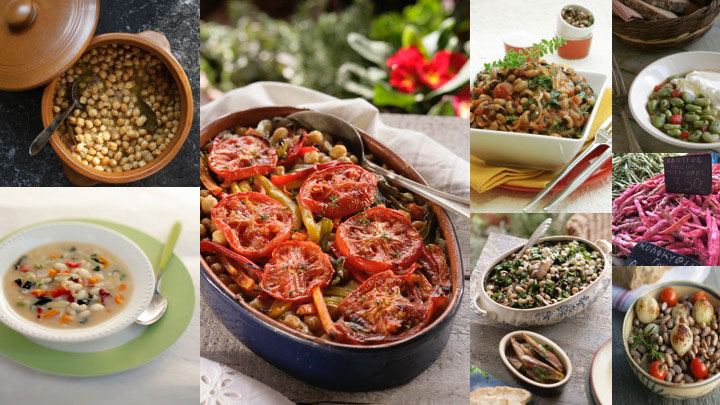NINE WAYS FORWARD WITH PLANT-BASED DISHES.
TAKE A LOOK AT SOME OF THE OFFERINGS GREEK CUISINE
SERVES UP!
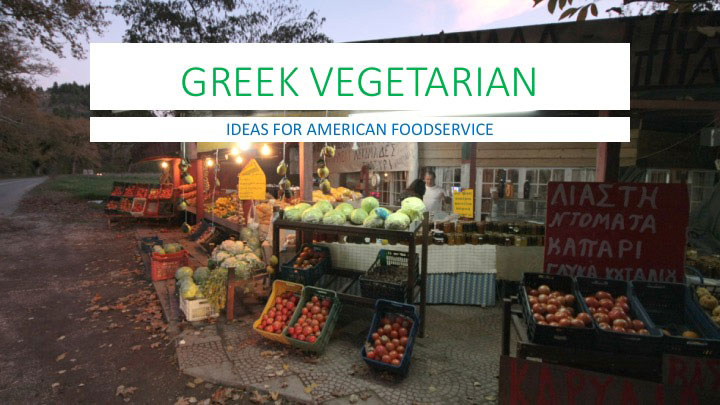
Vegetables are everywhere in Greece…even on the side of the road!
Animal protein is on a lot of people’s minds. Americans and Western Europeans eat way too much of it. The World Health Organization derided red meat and processed meats as carcinogenic in a much-publicized report a few months ago. The growing dissent about the overuse of antibiotics in the meat industry — 70% of all antibiotics consumed in the United States are consumed by animals not people — coupled with growing awareness of the environmental destruction caused by the cattle industry are making consumers and the foodservice industry alike take a new approach to meat.
That approach is about plant-forward recipes, in which meat is relegated to lesser status, either as a condiment or as a garnish. Less meat, better quality is the new mantra. Plant-forward is hot!
These are some of the themes that came up at the recent CIA-Greystone World of Healthy Flavors conference, which i had the honor of attending and in which the focus was on how to get consumers and the foodservice industry as a whole off meat and on to veggies. Needless to say, the Mediterranean Diet came up a lot!
Greek cuisine is probably the most plant-forward of all Mediterranean cooking traditions, blessed with an enormous range of plant-based recipes and products that are satisfying and delicious and make you want to crave them.
I thought it would be fun and useful to create a picture essay of some of the great ways plant-based foods and products are used in the Greek kitchen. Eat away, live longer, and save the planet, too!
THINGS TO CONSIDER:
1) BEYOND GREEK SALAD: SEASONAL PRODUCE THAT WILL SURPRISE YOU.
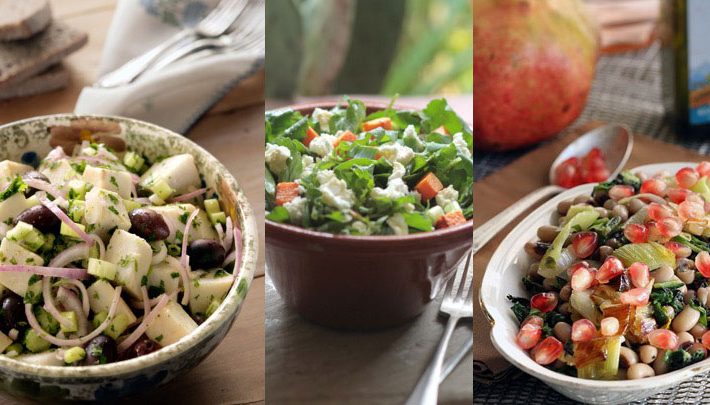
So much more than classic Greek salad!
Everyone loves a good Greek salad. But one of the tenets of the Greek-Mediterranean diet is seasonality. So, think about Greek-style salads that use ingredients that are in season. A few traditional Greek ingredients will surprise many chefs and consumers: taro root (we boil it up like a potato salad, with red onions and Kalamata olives), sweet potatoes, arugula, and beans,beans beans, paired with pomegranate seeds, herbs, cooked or fresh greens, celery, leeks and more! The varieties of Greek seasonal salads are endless.
2) UNUSUAL WHOLE GRAIN PRODUCTS THAT ARE EASY TO USE, VERSATILE, AND COST-EFFECTIVE

Whole grains in new forms: Greek rusks aka paximadia
Explore the wide world of Greek rusks! If you take a peek at Greek markets all over the United States, you’ll find a great variety of these ancient bread products, which are essentially twice baked breads. Think savory biscuit. Use them in a variety of seasonal salads, in soups, crumbled and as a filling, craveable, crunchy, textural topping for pasta and other foods, and as a base for building beautiful vegetable plates.
3) PHYLLO PIES ARE A GREAT VESSEL FOR COUNTLESS VEGETABLE AND PLANT-BASED FILLINGS.
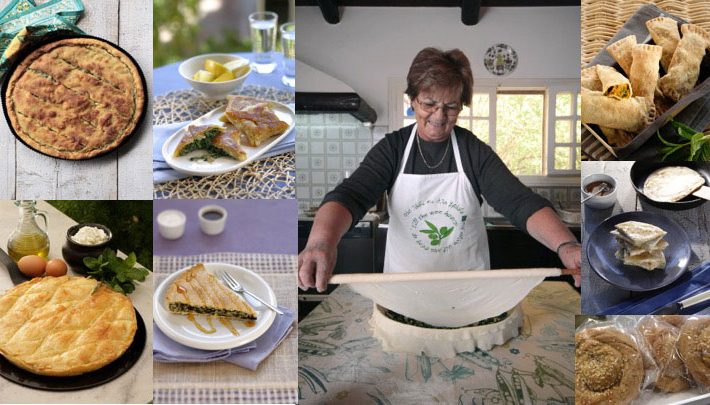
Savory phyllo pies are a great vehicle for all sorts of veggies
Most people have at least heard of Greek spanakopita, spinach pie. This is but one of literally thousands of options worth exploring. Greek regional savory pies are filled with the likes of tomatoes, pumpkin, zucchini, dozens of different greens and herbs, cheeses, carrots, onions, nuts andmore. They are a wonderful addition to menus in every category of dining.
4) RICE! YES, GREECE PRODUCES IT AND GREEK RICE RECIPES OFTEN INCORPORATE VEGETABLES.
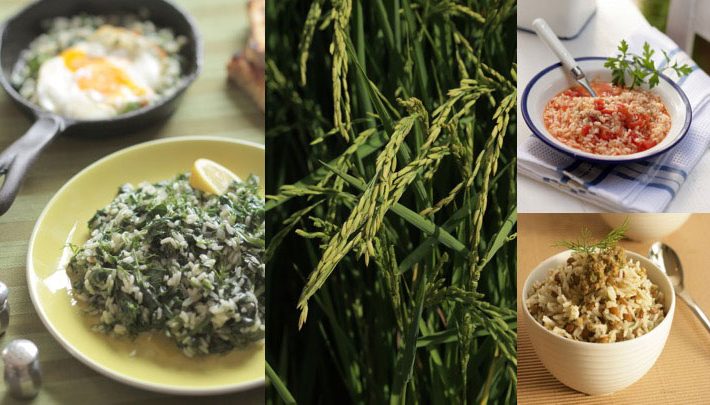
Greek rice dishes are a great way to incorporate vegetables into your diet!
From pilafs enriched with spinach, herbs, asparagus, tomatoes, leeks, and cabbage (a few of the classics), to rice and lentil combos, to rice as a filler in delicious vegetable soups and even in sweet phyllo pies (vegan, with olive oil, cinnamon and raisins), the combos are endless. Rice is cultivated in northern Greece along river deltas and close to the sea, where the soil is rich and minerally and sprayed by the sea, so naturally salty and flavorful. Greek rice is also arsenic-free, so think about searching some out for your favorite rice dishes. Take a look at some of my favorites here.
5) PULSE FEAST!
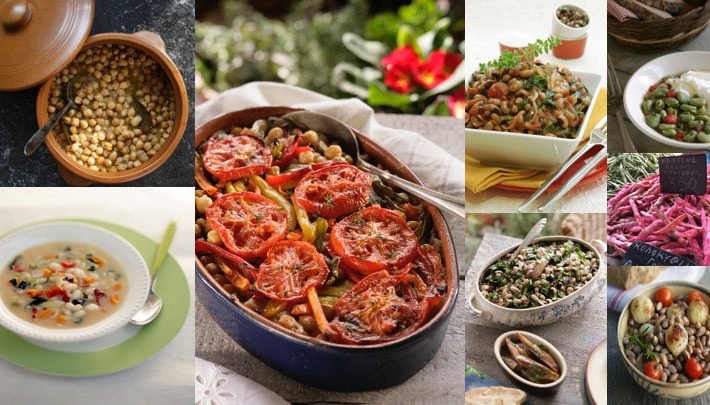
Pulse Feast!
One of the things I am most proud of as a parent is that my kids love pulses and beans and we eat them at least once and often twice a year. Look into some of the ways we cook beans, in luscious stews glistening with excellent greek extra virgin olive oil, mixed with greens and vegetables, in soups, as salads, topped with Greek yogurt and more. There are enough regional greek bean recipes to fill a book!
6) GREENS, GLORIOUS GREENS!
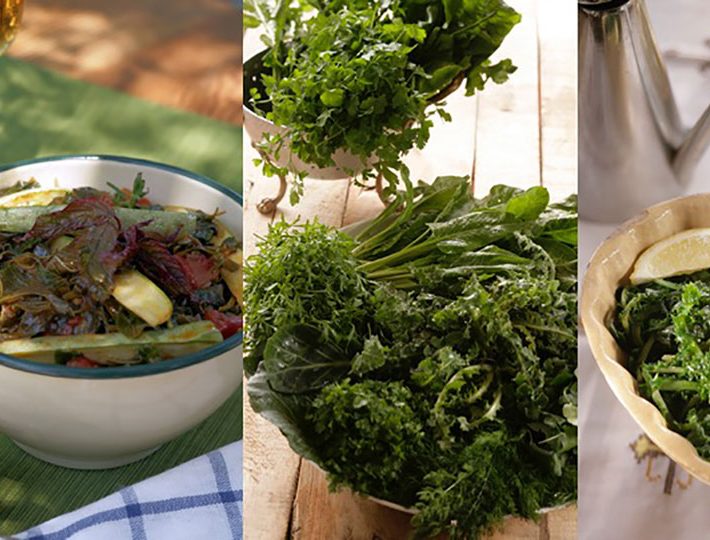
Greens, Glorious Greens!
We have been hearing about the nutritional value of greens for a while now. In Greece, the varity of greens in the diet is impressively large, literally in the dozens. Greek cuisine incorporates both sweet and bitter greens in raw and boiled salads, in pies, in stew and casseroles, mixed with vegetables, pulses, and grains. Olive oil is always served over greens. Yum!
7) GREEK PLANT-BASED CASSEEROLES
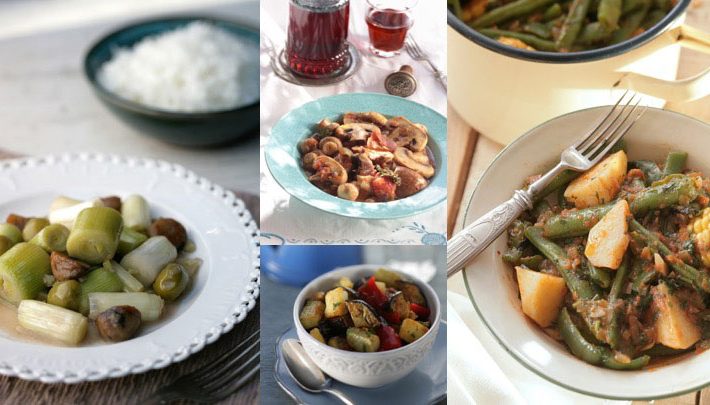
Olive Oil based stews are chock full of veggies.
Mushroom stew anyone? Leeks with olives in a delicious braised dish that could be served at the most exquisite fine-dining restaurant? Easy one-pot mixed vegetable medleys? Yes, these are the way Greeks love their vegetables the most: cooked slowly in a lot of olive oil with fresh vibrant herbs, onions, and garlic. This is simple peasant food that’s easy to adapt to 21st century dietary needs. Dig in, and have a wedge of good whole-rain bread to go with it!
8) RETHINK THE VEGGIE BURGER WITH A GREEK TWIST
Was the veggie burger the original “creative” way to get vegetables into the mainstream? Maybe. But most of them are pretty awful. Well, that doesn’t have to be the case if you look to traditional Greek recipes. Take inspiration from pan-seared, pan-fried or oven-baked (for a lighter variation) patties made with vegetables and pulses that come from every region of Greece: tomato patties seasoned with cinnamon from Santorini and the Cyclades; pumpkin and zucchini patties with herbs; yellow split-pea patties; greens patties. They’re all easy, cheap and beautiful.
9) BEYOND HUMMUS!
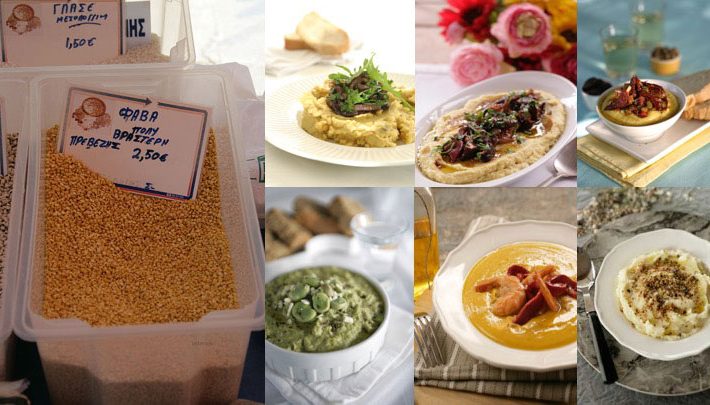
Beyond hummus!
Hummus has conquered the world. At some point we’re going to get sick of it! So move the pulse-paste to a new frontier b looking to yellow split peas, fava beans, and Greek giant beans as the main ingredient in countless hummus-type dishes.
